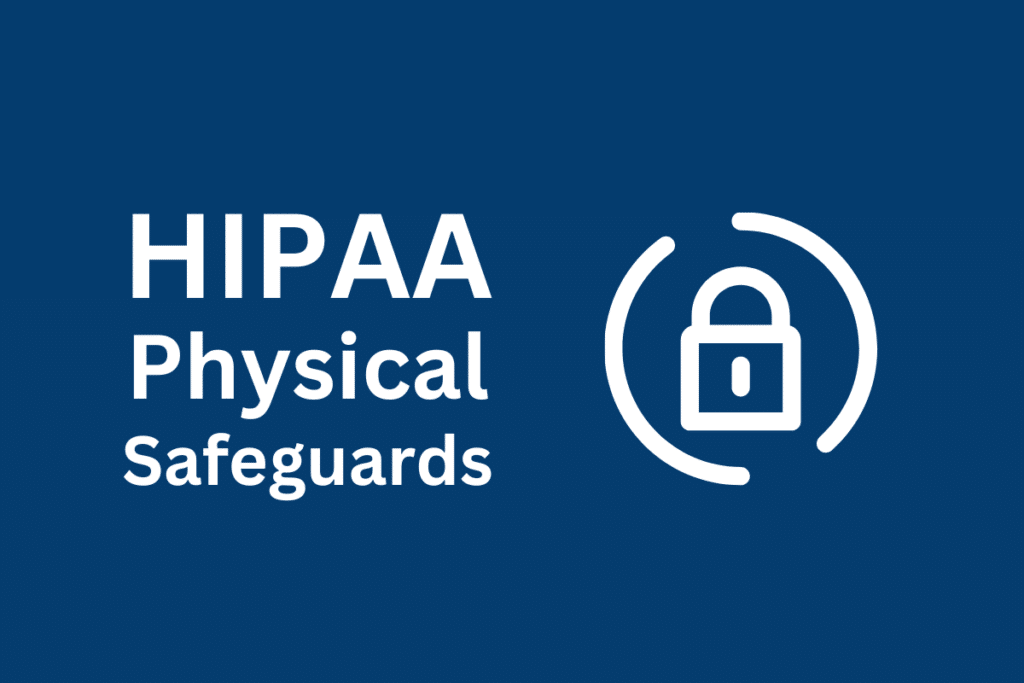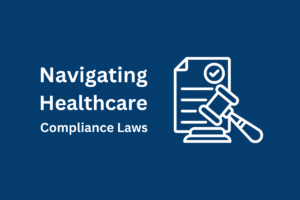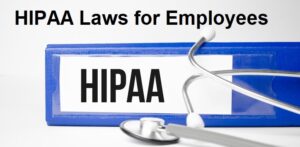HIPAA’s Security Rule outlines the standards and requirements for safeguarding ePHI with administrative safeguards, technical safeguards, and physical safeguards. They are essential for any digital health startup looking to protect their users’ information online.
HIPAA physical safeguards protect a covered entity’s ePHI (electronically protected health information) with physical measures that guard against environmental hazards and unauthorized access.
In this article, we will explain HIPAA’s physical safeguards, benefits, and implementation for digital health vendors.
Understanding HIPAA Physical Safeguards
The HIPAA Security Rule defines physical safeguards as “physical measures, policies, and procedures to protect a covered entity’s electronic information systems and related buildings and equipment from natural and environmental hazards and unauthorized intrusion.”
Some examples of physical safeguards for digital health startups could be:
- Install security cameras and alarms in ePHI areas to detect and deter unauthorized users.
- Implement secure access systems such as key cards, biometric authentication, or PIN codes to restrict physical access to areas where ePHI is stored or processed.
- Ensure that portable devices (laptops, tablets, smartphones) are encrypted and password-protected.
Key Components of HIPAA Physical Safeguards
Physical safeguards can be broken down into “required” and “addressable” standards.
- Required Standards: These are must-do rules. Healthcare organizations have no choice but to implement these safeguards. They are critical for ensuring the safety and confidentiality of patient information. Examples include controlling facility access and ensuring workstations that access patient information are secure.
- Addressable Standards: Addressable standards should be implemented by healthcare organizations in a way that fits their specific needs and circumstances. The key is to evaluate these standards, consider their relevance to the organization, and then apply them reasonably and appropriately.
Types of HIPAA Physical Safeguards
HIPAA’s Physical Safeguards are vital for maintaining the confidentiality, integrity, and availability of sensitive data in the healthcare industry. According to HHS, these are the four types of HIPAA physical safeguards:
Facility Access Controls
Facility Access Controls refer to the measures and security policies that limit physical access to facilities where health information is stored, ensuring that only authorized personnel can enter. These controls are designed to protect against unauthorized physical access, tampering, and theft of electronic health information.
The four addressable implementation specifications under HIPAA Physical Safeguards’ Facility Access Controls are:
- Contingency Operations: Plans for emergency access to PHI facilities to restore data and maintain security standards.
- Facility Security Plans: Strategies to prevent unauthorized access to facilities and equipment housing PHI with security personnel, physical locks, electronic alarm systems, etc.
- Access Control and Validation Procedures: Methods to restrict facility access to authorized personnel and validate their identity and authorization.
- Maintenance Records: Detailed logs of maintenance for security hardware like doors, locks, and keys to ensure ongoing facility security.
Workstation Use
Organizations must implement policies and procedures that clearly define the proper functions performed at workstations that access ePHI (Required). These policies should specify how these functions are to be completed and the required physical environment of the workstations.
Workstation Security
While Workstation Use covers the behavioral aspect, Workstation Security focuses on the physical part of protecting the workstations themselves. Healthcare startups must implement measures to secure workstations against unauthorized physical access.
Device and Media Controls
Device and media controls are how electronic devices and media (like hard drives, USBs, and CDs) store patient data. It includes procedures for their use, transfer, disposal, and re-use.
Under HIPAA Physical Safeguards, the Device and Media Controls standard includes:
- Disposal (Required): Policies and procedures for properly disposing of ePHI and the hardware or media where it’s stored.
- Media Re-Use (Required): Procedures to remove ePHI from electronic media before re-using.
- Accountability (Addressable): Keeping records of hardware and media movements and the individuals responsible.
- Data Backup and Storage (Addressable): Ensuring a retrievable, exact copy of ePHI is available before moving equipment.
Benefits of HIPAA Physical Safeguards
HIPAA Physical Safeguards offers substantial benefits for digital healthcare applications and startups focusing on patient data protection:
- Enhanced Data Security: By adhering to HIPAA physical safeguards standards like controlled facility access and secure workstation use, covered entities and business associates ensure a higher level of security for electronically Protected Health Information (ePHI) against data breaches and other security risks.
- Increased Trust and Credibility: Partners and users are more likely to trust applications that demonstrably protect their personal health information, which can be a significant competitive advantage against other startups.
- Facilitating Partnerships: Many healthcare providers and partners prioritize working with HIPAA-compliant businesses. Being HIPAA compliant can open opportunities for larger contracts and partnerships with major healthcare institutions.
- Innovation Promotion: A secure environment encourages innovation. Startups can more confidently develop new technologies and applications when they have robust data protection measures in place.
- Operational Efficiency: Implementing structured security measures like data backup and media control procedures can streamline operations. Efficient data management and secure disposal practices can save time and resources in the long run.
Implementing HIPAA Physical Safeguards
Here’s a step-by-step guide to implementing HIPAA physical safeguards in your organization:
Step 1: Conduct a Risk Assessment
Start by assessing your current security measures and identifying potential risks to ePHI. Focus on access to facilities, workstation security, and device management to understand where enhancements are needed.
Read more: Comprehensive HIPAA Risk Assessment for Enhanced Data Security in Healthcare
Step 2: Develop Comprehensive Policies
Create detailed policies that address all aspects of HIPAA Physical Safeguards. This includes facility access controls, workstation use, and media handling. Ensure these policies are well-documented and easily accessible to your staff.
Step 3: Implement Facility Access Controls
Secure your physical facilities. Use locks, alarms, and access controls to prevent unauthorized access. Ensure only authorized personnel can access areas where ePHI is stored or accessed.
Step 4: Secure Workstations and Devices
Implement security measures for workstations and devices that access ePHI. This includes positioning screens to prevent visibility to unauthorized individuals and using secure logins. Also, encrypt ePHI on all devices.
Step 5: Train Your Staff
Conduct training sessions for your staff on HIPAA regulations and your specific policies. Ensure business associates and employees understand the importance of physical safeguards and their role in maintaining them.
Step 6: Establish Device and Media Controls
Set up procedures for handling and disposing of devices and media containing ePHI. This includes protocols for data deletion, device disposal, and media re-use.
Step 7: Maintain and Update Security Measures
Regularly review and update your security measures. Stay informed about new threats and technologies to enhance HIPAA compliance and implement disaster recovery plans. Keep detailed records of your compliance efforts, including policy updates, training sessions, and security incidents.
Note: Public cloud providers are required to implement the same set of physical safeguards as mandated by HIPAA. However, HIPAA compliance involves more than just these physical measures. Digital health startups must also address other HIPAA aspects, including Privacy, Security, and Breach Notification Rules, in their operations for full compliance.
MedStack‘s partnership with Azure and AWS ensures that our customers directly benefit from the HIPAA Physical Safeguards these cloud providers implement.
Conclusion
Every action you take in enforcing HIPAA measures impacts the integrity of your business. MedStack simplifies HIPAA compliance for your digital health app with:
- Easy-to-use policy templates.
- Training for physical data security.
- Solutions for secure facilities and devices.





